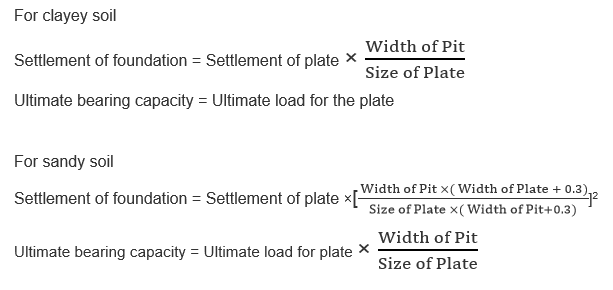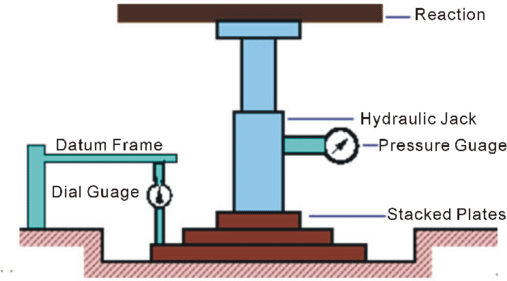Plate Load Test?
What is Plate Load Test?
Plate load test (PLT) is an in-situ test to measure the bearing capacity of soil and to estimate settlement of foundations. It is applicable for clayey and sandy soils. The results of plate load test is a useful guideline for design of foundation and determination of safety factor. As it is shown on figure, PLT equipment includes: steel plate, hydraulic jack, support beam and dial gauges.
Test Procedure
First a pit is excavated at the site of which foundation construction. This pit should be at least five times larger than plate dimensions, and its depth should be equal to the foundation depth.
Generally plate is rectangular (0.3m x 0.3m) or circular (0.3m diameter) with 25mm thickness.
Next, the hydraulic jack is mounted to apply the force according to standards codes. Finally, the load displacement curve is obtained and can be used to estimate the bearing capacity of soil.
From the curve, the ultimate capacity for the plate is the load which is corresponding to settlement of one-fifth of the plate width. And since the dimensions of foundation are different from plate size, some equations must be used to estimate the bearing capacity of the foundation. These equations are different for Clayey and Sandy Soils. To be on the safe side, a safety factor of 2-3 is applied.




Comments